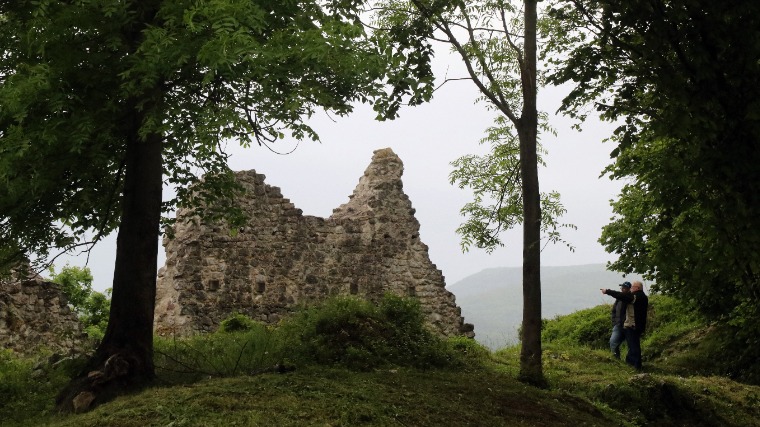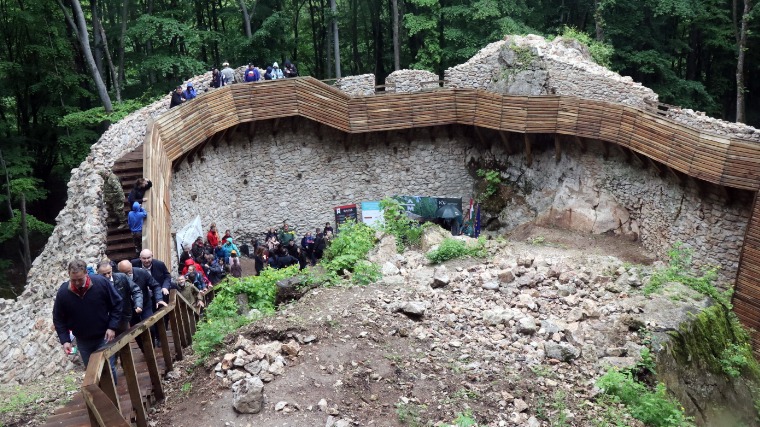The renovated part of the Szádvár in Szögliget was handed over on Sunday, the renovated Szádvár in Szögliget, which was awarded the ICOMOS award, offers lookout points, pedestrian walkways, safe visitor routes, benches, picnic points, information boards and the country's largest castle terrain staircase for hikers.
The ruins of the medieval fortress of Szádvár on the top of the Castle Hill in the Aggteleki National Park, on the border of Szögliget, have become a visitor-friendly excursion site thanks to the developments and conservation of the National Castle Program. The ruin area expands the cultural and touristic offer of the region, specifically serving the needs of tourists with boots.
At the ceremony on Sunday, Vince Szalay-Bobrovniczky responsible for civil and social relations said: a part of our national heritage has come back to life, the government spent more than 316 million forints on it.
The so far little-known monument in northern Hungary was developed into a new tourist attraction within the framework of the National Castle Program, with the investment of the National Heritage Protection Development Nonprofit Kft.

Photo: MTI/János Vajda
Zsolt Virág , the ministerial commissioner of the National Castle Program and National Castle Program, said: the goal of the project realized within the framework of the National Castle Program coordinated by the NÖF was the cultural, heritage protection and tourism development of the ruins.
Its central element was the creation of an orderly forested and wooded ruin area and a safe visitor route, as well as the stabilization of the 440-meter length of the castle walls affected by the route, in addition to the protection of the natural environment.
After the development, Alsóvár became the reception point of the complex. In the same place, you can also walk through the crown of the eastern and northern castle walls, which are 8-12 meters high and are wedged between huge boulders. Observation points were established in the forecourts of the eastern, northern and western bastions.
In the western courtyard of Belsővár, visitors can view a large number of large-scale medieval carved stone materials that have been scattered in the area for centuries.
The new visitor route created during the project maintains an appropriate protective distance from dangerous walls, cellars, and cisterns. The benches, information boards, flagpoles, stone storehouse, rain shelter, and pedestrian walkway established in the forested and wooded ruin area are simple in design, but using traditional materials, made of oak.
Tamás Glázer , the executive director of the NÖF, said that the preservation of Szádvár in Zögliget, first mentioned in written records in 1268 and destroyed 304 years ago, won the ICOMOS award of the Hungarian National Committee of the International Council of Monuments and Sites.
The development realized within the framework of the National Castle Program was invested by NÖF, and the construction was carried out by Salisbury Régészeti Kft., the winner of the public procurement. Thanks to the project, the castle ruins standing in a unique natural location can become one of the top destinations for tourism in Borsod-Abaúj-Zemplén county, in an area that has been visited by relatively few people until now.
Source: MTI
Front page photo: The Szádvár castle ruins in Szögliget, renovated within the framework of the National Castle Program and the National Castle Program, on the day of handover (Photo: MTI/János Vajda)












